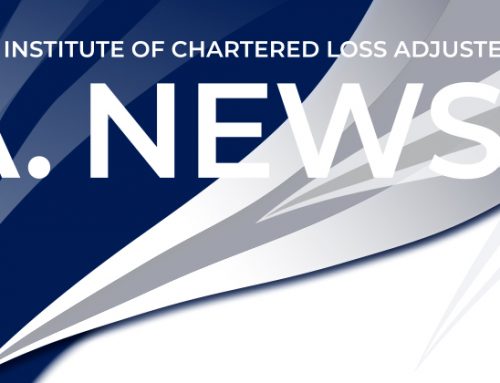Dear Member,
Over recent months I have attended a few different events and one of the topics for discussion has been technology, and what the future looks like for loss adjusting. If I had the answer I’d be an expensive consultant and not a loss adjuster, but there have been some interesting thoughts expressed by various people. I thought I would share some points that struck a chord with me and are interesting to think about.
I listened to a session presented by Jon Held, a 70 year old cost consultant from the US; some of you may have dealt with his firm, JS Held. It was curious to open a conference on technology with someone who has spent most of his career “before technology was invented”. He divided time into three ages. First, he said there was the period up to about 1985: pre-technology where experts used pen and paper and manual calculation. Second was the period 1985 to 2015: where everyone did the same thing they always had done, but with better tools; laser measurers instead of tape measures; tablets instead of pen and paper.
Held’s view was that the period of technological revolution only started in 2015, when we started changing the way we do things. The introduction of drones, “AI” processing and remote sensing all change the way things are done, and have the biggest impact on loss adjusters.
My analogy would be a cab driver. Originally, they had paper maps, then they moved to GPS and everyone said “look how technology has changed things”. But actually, that wasn’t a radical change. Now we are evolving self-driving cars and drone delivery of purchases. That is a revolutionary change.
At the same conference a futurist spoke. He was very interesting, which was good because he went 20 minutes overtime into drinking time. He made the comment that “the future is already here, it is just not evenly distributed”. His view was that many of the things that will represent the future of our industry already exist, they just aren’t applied in our industry yet. For example, if you asked people when self-driving trucks will operate on public roads, most would say that this is foreseeable, but 5 years away (if they think it will ever pass regulatory and societal pressures). In fact, the first commercial self-driving delivery was in October 2016, a 200 km joinery delivering commercial goods. It is not a wide-spread practice, but it happened.
If you were a cab driver, the future is already here, it just isn’t in that industry… yet.
Uber is a familiar development in the taxi industry, but the same has happened in the loss adjusting industry – Crawfords purchased WeGoLook (https://wegolook.com/ pro-services/insurance), effectively outsourcing and disaggregating inspections in the same way that Uber outsourced and disaggregated taxi driving. Would you have predicted the “uberisation” of loss adjusting 5 years ago?
Of course, this example is perhaps in Jon Held’s second age – it looks like a technological revolution (given it needs a good platform to operate on) – but is actually still just inspections. What if that was a “self-driving inspector”; a robot or even a drone and the adjuster never had to leave the office?
I’ll finish with most of the ending of my favourite movie….
“I know you’re out there. I can feel you now. I know that you’re afraid…. You’re afraid of change. I don’t know the future. I didn’t come here to tell you how this is going to end. I came here to tell you how it’s going to begin. I’m going to hang up this phone, and then I’m going to show these people what you don’t want them to see. I’m going to show them a world without you. A world without rules and controls, without borders or boundaries. A world where anything is possible. Where we go from there is a choice I leave to you.”




